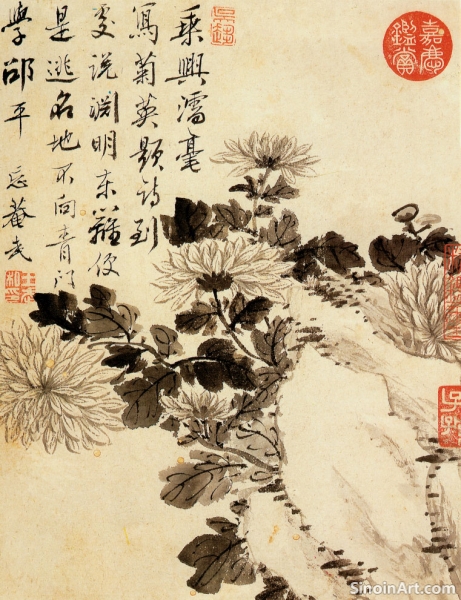The Meticulous Hand: Precision and Detail in Gongbi Painting
|
Chinese Gongbi painting, distinguished by its meticulous detail and precise execution, stands as a testament to the dedication and technical skill of its practitioners. Unlike the expressive spontaneity of Xieyi (freehand) painting, Gongbi emphasizes a controlled and highly detailed approach, striving for a realistic depiction of the subject matter. This pursuit of perfection is central to the aesthetic and philosophy of the Gongbi tradition.  At the heart of Gongbi technique lies the mastery of the fine brush. Artists utilize specialized brushes with fine, pointed tips to execute delicate lines that meticulously outline every form and detail. This precise line work provides the foundation for the painting, defining shapes and textures with remarkable accuracy. The brush is used with both control and intention, and the lines must be deliberate and unwavering.  The application of color in Gongbi painting is equally meticulous, involving the use of numerous thin layers of pigments, often mineral or plant-based. These pigments are carefully applied with multiple washes to achieve a sense of depth, luminosity, and subtle gradations of tone. This layering process can be exceptionally time-consuming but is essential for achieving the refined and highly realistic effect that is characteristic of Gongbi work. The meticulous approach to color is a crucial aspect of the style.  The pursuit of detail in Gongbi painting extends to all aspects of the artwork, from the smallest veins of a leaf to the intricate patterns of a bird's plumage. Artists often employ magnifying glasses to ensure the accuracy of their work, demanding incredible patience and focus. This emphasis on detail not only contributes to the aesthetic beauty of the painting but also serves as a demonstration of the artist's technical prowess and dedication. The enduring appeal of Gongbi painting lies in its ability to combine technical mastery with aesthetic beauty. While the meticulous approach may appear to be restrictive, it is within these very constraints that artists have been able to create works of remarkable refinement and detail. The precise execution of line and color, combined with the artist's skilled observation of the natural world, allows Gongbi paintings to capture the essence of their subjects with extraordinary accuracy and a lasting sense of beauty. |
Tag : Gongbi Precision, Detailed Chinese Painting, Meticulous Gongbi Art, Gongbi Painting Detail, Traditional Chinese Fine Art
Related information
- The Role of Line in Gongbi: Structure and Expression
- The Use of Gold Leaf and Other Embellishments in Gongbi
- Gongbi Painting and the Depiction of Clouds and Mist
- The Use of Gilding and Metallic Pigments in Gongbi
- The Symbolic Language of Gongbi: Exploring Motifs and Meanings
This article focuses on the importance of line in Gongbi painting, detailing the "gougou" outlining method, the variation in line weight, and the use of lines to convey structure and expression in the artwork.
This article explores the use of gold leaf and other embellishments in Gongbi painting, detailing their application, symbolic significance, and contribution to the visual richness and overall aesthetic of the artwork.
This article explores the depiction of clouds and mist in Gongbi painting, highlighting the techniques used to create a sense of depth, luminosity, and atmosphere, and how the subtle variations in color and tone evoke a sense of mystery and serenity.
This article explores the use of gilding and metallic pigments in Gongbi painting, highlighting how these elements add a sense of luxury, luminosity, and symbolic meaning, while also requiring a high degree of skill and precision in their application.
This article explores the rich symbolism embedded in Gongbi paintings, focusing on the meanings of flowers, animals, landscapes, and colors, and explaining how these symbols enhance the narrative and cultural significance of the artwork.